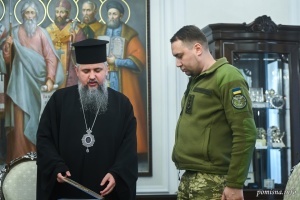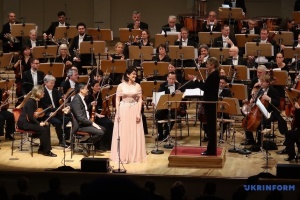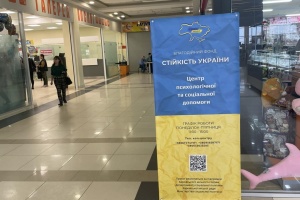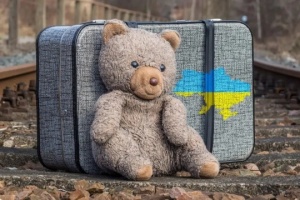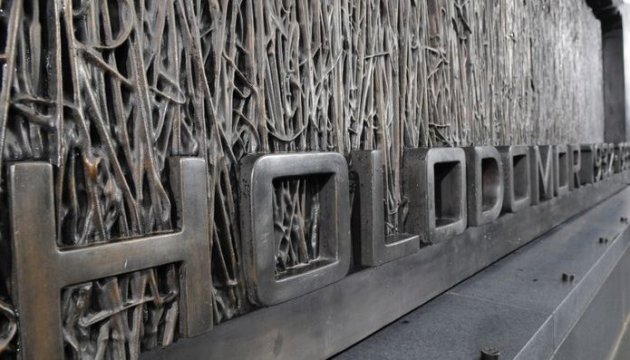
Holodomor: The Hidden Genocide
In the aftermath of the First World War, and the Bolshevik Revolution, and following a period of drought, Russia in 1921 found itself faced with crippling food shortages.
On the orders of Lenin, in the previous year, much needed grain was being forcibly requisitioned by the state, leaving the countryside peasantry on whom the agricultural sector depended, unable to feed even themselves.
In the context of a country ravaged by war, depleted of manpower, and without sufficient grain necessary to sow for the next year’s harvest, agricultural production was to plummet to dangerous lows.
The most productive regions traditionally produced some 20 million tonnes of grain per annum. In 1920 production had fallen to 8.45 million, tonnes, and following the drought, in 1921 it was down to just 2.9 million tonnes. In some parts of Russia and also in Ukraine production was down to as low as 5% of the traditional norm.
The scene was set for a humanitarian disaster of phenomenal proportions: starvation led to scenes of horror, with reports of cannabilism rife. A refugee crisis ensued.
On June 21st 1921 Pravda declared that 25 million people were starving in the Soviet Union.
Eventually, and against Lenin’s instinct, international assistance was to come via the efforts of Herbert Hoover’s American Relief Administration (ARA). By 1922 the ARA was feeding 11 million people each day and distributing much needed medical aid, thus saving millions of lives.
However, by the end of that year, 5 million had perished.
Whilst it might be assumed that Lenin would have learned from the failures of forced collectivisation and unrealistic economic and political policies, it was to be his successor, Josef Stalin, who truly learned the lessons of famine - and just a decade later he was to apply those lessons in the most brutal and callous way possible.
Stalin was to embark on the deliberate and ruthless genocide of some 7 million of his own people.
By the 1930s, agricultural production had fully recovered, the famous ‘black soil’ of Ukraine was again the most fertile in Europe.
Lenin’s ‘New Economic Policy’ of 1922, intended to introduce "a free market and capitalism, both subject to state control” in order to stimulate production, had been swept aside by Stalin in 1928. Collectivisation was being forced on the peasantry, and in emulation of Lenin’s failed policy that caused so much disaster a decade earlier, in 1932 quotas were introduced demanding that food be handed over.
Like many Soviet politicians, Stalin feared the independent inclinations of the Ukrainian people, considering them to be “counter-revolutionary”, and so began a programme of the elimination of the Ukrainian intelligentsia and elites.
Then, in an act of almost unprecedented evil, he set out to destroy the peasantry, who had always resisted collectivisation, by applying the lessons of 1921-22.
Whilst some, notably in modern Russia, still question or even deny Stalin’s intentions, much documentary evidence remains of his culpability in the politically induced famine that is now remembered as ‘Holodomor’.
Politburo resolution, dated November 18, 1932: “Comrades Redens and Kosior have until November 23 to develop an efficient plan for exterminating the main counter revolutionary clusters of the Kulaks and Petlura, first of all in Pavlograd, Uman and Bila Tservka districts and also in the areas outside the towns of Borzny and Miny…"
Communities failing to meet the totally unrealistic quotas imposed upon them were punished by having them raised still further. Party officials and armed soldiers ransacked homes, taking away every scrap of food they could find: soon the mere possession of food would be punishable by imprisonment or arbitrary execution.
Refugees attempting to flee the affected countryside in search of food were turned back or shot. Starvation and cannibalism returned, with 2,500 people being prosecuted for the offence.
Whilst exact numbers can never be known - the mortality rate was so high that many local councils simply stopped recording deaths - as many as seven and a half million may have perished in a period of just ten months.
In the aftermath, there was an official denial of any famine. Almost until the very end of the Soviet era it was a crime to talk about Holodomor - as with so many atrocities committed under Stalin’s rule, “it never happened”.
Only in 1983 did the Soviet government acknowledge that a famine had occurred, commencing a disinformation campaign placing the blame on drought. In the same year, the Soviet Embassy issued an official protest over the unveiling of a monument in memory of the victims of the Holodomor in Edmonton.
However, former President of Ukraine, Leonid Kravchuk, admitting to his own role in the official cover-up, came out in support of recognising the famine as a deliberate act of genocide.
Now, of course, we all know the truth. 27 states recognise Holodomor as a preconceived act of genocide. This position is endorsed by the final report of the "International Commission of Inquiry Into the 1932–33 Famine in Ukraine", delivered to the UN Under-Secretary for Human Rights in Geneva on May 9 1990, which concluded that the famine in Ukraine was, indeed, genocide.
The EU and the USA have recognised Holodomor as “an attack on the Ukrainian people”.
But this is not enough. The UK has, despite numerous campaigns, as well as lobbying by the Ukrainian community in Great Britain, still to recognise Holodomor as an act of Genocide.
The current Russian government, itself accused of human rights abuses, including recently in occupied Crimea where the indigenous Tatar population has faced persecution reminiscent of Stain’s deportations in 1944, appears to be falling back to its 1983 position.
The Kremlin is known to have lobbied foreign governments not to recognise the famine as genocide, and during a 2009 discussion in Moscow with Israeli Foreign Minister Avigdor, Russian Foreign Minister Sergey Lavrov described Israel's recognition of the Holodomor itself as "historical revisionism”.
Whilst rehabilitation of Stalin is central to Vladimir Putin’s authoritarian state and his vision of Russia’s resurgence as a great power, like Stalin, the Russian President also views Ukraine as a threat.
Applebaum in her book ‘Red Famine’:“It is possible to hear the echo of Stalin’s fear of Ukraine—or rather his fear of unrest spreading from Ukraine to Russia—in the present too. The Russian FSB, successor of KGB, continues to demonise its opponents using propaganda and disinformation,” writes Anne .
The warning signs are there for all to see.
James Mace, US Holodomor scholar: «I remain convinced that for Stalin to have complete centralized power in his hands, he found it necessary to physically destroy the second-largest Soviet republic, meaning the annihilation of the Ukrainian peasantry, Ukrainian intelligentsia, Ukrainian language, and history as understood by the people; to do away with Ukraine and things Ukrainian as such. The calculation was very simple, very primitive: no people, therefore, no separate country, and thus no problem. Such a policy is Genocide in the classic sense of the word».
The "Holodomor victims Memorial" is Ukraine's national museum devoted to the victims of the Holodomor of 1932-1933.
Open daily from 10a.m. - 6p.m. (except on Mondays) it can be visited at 3 Lavrska Street, Kyiv (nearest metro station Arsenalna).
www.memorialholodomors.org.ua
By Gary Cartwright, British journalist

